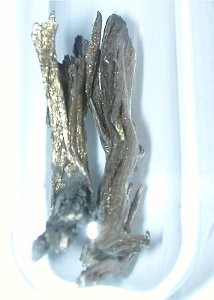Samarium
 |
| Name | Samarium |
| Symbol | Sm |
| Atomic Number | 62 |
| Atomic Mass | 150.36 atomic mass units |
| Number of Protons | 62 |
| Number of Neutrons | 88 |
| Number of Electrons | 62 |
| Melting Point | 1072.0° C |
| Boiling Point | 1900.0° C |
| Density | 7.54 grams per cubic centimeter |
| Normal Phase | Solid |
| Family | Rare Earth Metals |
| Period | 6 |
| Cost | $7500 per kilogram |
| Origin of Name | From smarskite, a mineral |
| Date and Place of Discovery | In 1879 in Paris, France |
| Discovered by | Paul Emile Lecoq de Boisbaudran |
| Common Compounds |
|
| Interesting facts |
|
| Common Uses |
|
Photo Courtesy of About.com |
| Samarium Atomic Structure | Elements by Name | Elements by Number | Home |